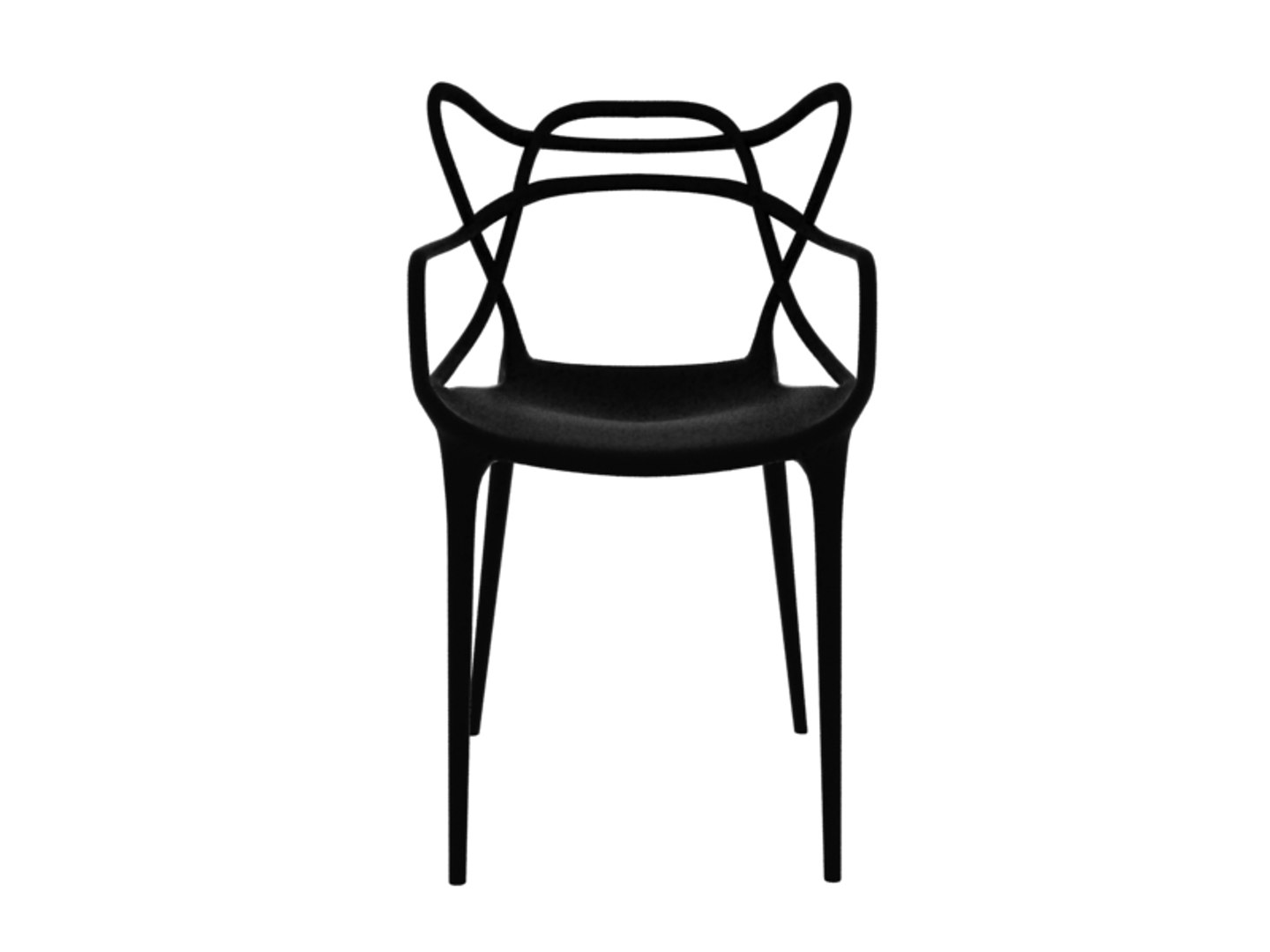Design & Aesthetics of the Kartell Masters Chair

The Kartell Masters chair, designed by Philippe Starck, is a striking example of contemporary furniture design. Its instantly recognizable silhouette and innovative use of materials make it a standout piece in any setting, blending seamlessly with both modern and classic interiors. The chair’s aesthetic success lies in its clever combination of form and function, creating a piece that is both beautiful and comfortable.
The Masters chair’s overall design is a playful yet sophisticated reinterpretation of classic chair forms, specifically referencing the iconic designs of Charles Eames and Arne Jacobsen. Its distinctive three-legged base provides a sense of lightness and stability, while the curved, enveloping seat and backrest offer ergonomic support. The chair is constructed from polypropylene, a durable and lightweight plastic, which allows for a wide range of vibrant colors and finishes. This material choice also contributes to the chair’s modern aesthetic.
Comparison with Iconic Chairs
The Kartell Masters chair stands apart from its inspirations through its distinct use of material and a slightly more streamlined form. While echoing the organic curves of Eames’s molded plastic chairs and the elegant simplicity of Jacobsen’s Series 7 chair, the Masters chair possesses a bolder, more contemporary aesthetic. The use of bright, almost translucent colors in the polypropylene distinguishes it further, adding a playful touch not typically found in the more muted palettes of mid-century modern designs. The single, continuous shell of the Masters chair, unlike the separate seat and back of some other iconic designs, contributes to its sleek, unified appearance.
Color Options and Interior Styles
The Kartell Masters chair is available in a wide variety of colors, each lending itself to different interior design styles. The following table highlights three popular options:
| Color | Description | Suitable Interior Styles |
|---|---|---|
| Transparent | A crystal-clear, almost invisible polypropylene that allows light to pass through, creating a sense of airy lightness. | Minimalist, modern, contemporary, spaces with abundant natural light. |
| White | A classic, clean white that offers versatility and easily complements a wide range of color palettes and styles. | Scandinavian, minimalist, modern, transitional. |
| Black | A sophisticated and elegant black that adds a touch of drama and visual weight to any space. | Modern, industrial, contemporary, spaces seeking a bold statement. |
Comfort, Ergonomics, and Functionality: Masters Chair Kartell Review

The Kartell Masters chair, while aesthetically striking, presents a complex interplay of comfort, ergonomics, and functionality. Its unique design, inspired by three iconic chair styles, results in a piece that is both visually appealing and, to varying degrees, comfortable and functional depending on the user and intended purpose. This section will delve into a detailed examination of the user experience, exploring its suitability for different environments and analyzing how its design features impact its overall usability.
Seating Comfort and Ergonomics
The Masters chair’s comfort is subjective and depends heavily on individual body types and preferences. The seat, while relatively shallow, offers adequate support for shorter individuals. However, taller users may find the seat depth insufficient, leading to discomfort over extended periods. The backrest, though sculpted for a visually appealing form, provides moderate lumbar support. This support, while acceptable for shorter durations, may prove inadequate for prolonged sitting. The overall ergonomics are best suited for shorter sitting durations and tasks that don’t require extensive back support, such as dining or brief periods of work. The lack of adjustability in the chair’s design is a significant factor limiting its ergonomic versatility.
Suitability for Various Uses, Masters chair kartell review
The Masters chair’s versatility is a key selling point. Its design allows for its integration into various settings.
Dining: The chair’s relatively compact size and stylish design make it a suitable option for dining settings, both formal and informal. Its sturdy construction ensures stability, while its comfortable enough for moderate periods of seated conversation. However, the lack of cushioning might be felt after extended meals.
Home Office: While visually appealing in a home office, the chair’s lack of adjustability and limited back support may not be ideal for extended periods of work. It’s better suited for short bursts of work at a desk, perhaps for writing or light computer use, rather than all-day use. Users requiring ergonomic support should consider supplemental lumbar support cushions.
Waiting Areas: The chair’s design lends itself well to waiting areas in cafes or reception areas. Its stylish appearance enhances the ambiance, while its sturdy construction ensures durability. The relative comfort is suitable for short waiting periods, but prolonged sitting might be uncomfortable for some individuals.
Design Impact on Comfort and Functionality
The Masters chair’s design, while visually captivating, presents a trade-off between aesthetics and ergonomics. The chair’s iconic form, derived from a fusion of three classical chair styles, prioritizes visual appeal over complete ergonomic functionality. The relatively shallow seat and sculpted backrest, though aesthetically pleasing, limit the chair’s adjustability and compromise long-term comfort. The lack of armrests further restricts its suitability for prolonged use. While the materials are durable and easy to clean, the absence of cushioning significantly impacts the comfort level for extended periods. For example, the hard plastic seat and minimal back support can cause discomfort during prolonged sitting, hindering its usability as a primary work chair.
